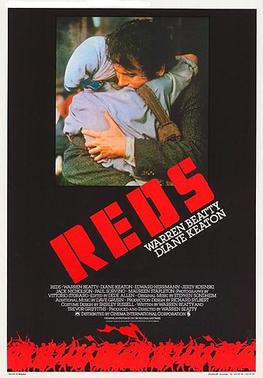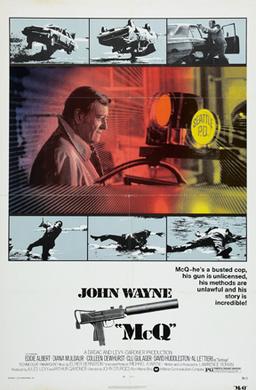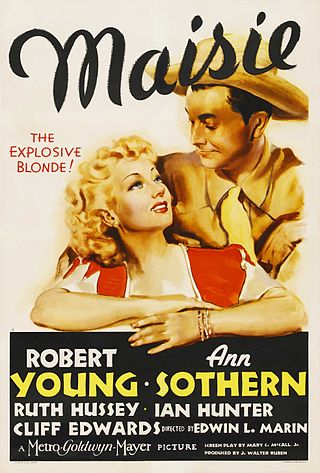Related Research Articles

Reds is a 1981 American epic historical drama film, co-written, produced, and directed by Warren Beatty, about the life and career of John Reed, the journalist and writer who chronicled the October Revolution in Russia in his 1919 book Ten Days That Shook the World. Beatty stars in the lead role alongside Diane Keaton as Louise Bryant and Jack Nicholson as Eugene O'Neill.

The Temptations are an American vocal group from Detroit, Michigan, who released a series of successful singles and albums with Motown Records during the 1960s to mid 1970s. The group's work with producer Norman Whitfield, beginning with the Top 10 hit single "Cloud Nine" in October 1968, pioneered psychedelic soul, and was significant in the evolution of R&B and soul music. The band members are known for their choreography, distinct harmonies, and dress style. Having sold tens of millions of albums, the Temptations are among the most successful groups in popular music.
This article contains information about the literary events and publications of 1998.
This article contains information about the literary events and publications of 1944.
Events from the year 1953 in literature .

Island in the Sun is a 1957 drama film produced by Darryl F. Zanuck and directed by Robert Rossen. It features an ensemble cast including James Mason, Harry Belafonte, Joan Fontaine, Joan Collins, Dorothy Dandridge, Michael Rennie, Stephen Boyd, Patricia Owens, John Justin, Diana Wynyard, John Williams, and Basil Sydney. The film is about race relations and interracial romance set in the fictitious island of Santa Marta. Barbados and Grenada were selected as the sites for the movie based on the 1955 novel by Alec Waugh. The film was controversial at the time of its release for its on-screen portrayal of interracial romance.
The National Association of Black Journalists (NABJ) is a 501(c)3 nonprofit educational and professional organization of African-American journalists, students, and media professionals. Founded in 1975 in Washington, D.C., by 44 journalists, the NABJ's stated purpose is to provide quality programs and services to and advocate on behalf of black journalists. The organization has worked for diversity and to increase the number of minorities in newsrooms across the country.
William James Edwards Lee III was a jazz bassist and composer, known for his collaborations with Bob Dylan and Aretha Franklin, his compositions for jazz percussionist Max Roach, and his session work as a "first-call" musician and band leader to many of the twentieth-century's most significant musical artists, including Duke Ellington, Billie Holiday, Harry Belafonte, Peter, Paul and Mary, Simon and Garfunkel, Judy Collins, Arlo Guthrie, Billy Strayhorn, Woody Guthrie, and Pete Seeger, among many others.
Timothy B. Tyson is an American writer and historian who specializes in the issues of culture, religion, and race associated with the Civil Rights Movement. He is a senior research scholar at the Center for Documentary Studies at Duke University and an adjunct professor of American Studies at the University of North Carolina.

John Alfred Williams was an African American author, journalist, and academic. His novel The Man Who Cried I Am was a bestseller in 1967. Also a poet, he won an American Book Award for his 1998 collection Safari West.
Ben Ames Williams was an American novelist and writer of short stories; he wrote hundreds of short stories and over 30 novels. Among his novels are Come Spring (1940), Leave Her to Heaven (1944) House Divided (1947), and The Unconquered (1953). He was published in many magazines, but the majority of his stories appeared in The Saturday Evening Post.

McQ is a 1974 American Panavision neo-noir crime action film directed by John Sturges and starring John Wayne. It costars Eddie Albert, Diana Muldaur, and Al Lettieri, and features Colleen Dewhurst, Clu Gulager, David Huddleston, Julian Christopher, Roger E. Mosley, and William Bryant in supporting roles. The film was shot in the State of Washington, making extensive use of locations in Seattle and with a sequence near the end filmed on the Pacific Coast at Moclips.
This is a list of African Americans, also known as Black Americans or Afro-Americans. African Americans are an ethnic group consisting of citizens of the United States mainly descended from various West African and Central African peoples with possible minor additional ancestry from Europe or indigenous Americans and other regions of Africa. As an ethnic group, African Americans are largely the modern-day descendants of West Africans and Central Africans brought to the US from the Trans-Atlantic slave trade who developed a new and distinct cultural identity during their time in the Americas.

Maisie is a 1939 American comedy film directed by Edwin L. Marin based on the 1935 novel Dark Dame by Wilson Collison. The rights to the novel were originally purchased by MGM for a Jean Harlow film, but Harlow died in 1937 before a shooting script could be completed. The project was put on hold until 1939, when Ann Sothern was hired to star in the film with Robert Young as leading man.
Henry Paul "Hal" Walters was a British actor. He was best known for his role in The Four Feathers (1939). He was killed by a bomb in an air raid during the London Blitz.
References
- ↑ Tucker 2018, p. xi.
- ↑ Tucker 2018, p. 155.
- ↑ Tucker 2018, p. 73.
- ↑ Tucker 2018, p. 129.
- ↑ Tucker 2018, p. 135.
- ↑ Maxwell 2015, p. 262.
- 1 2 Williams 2023.